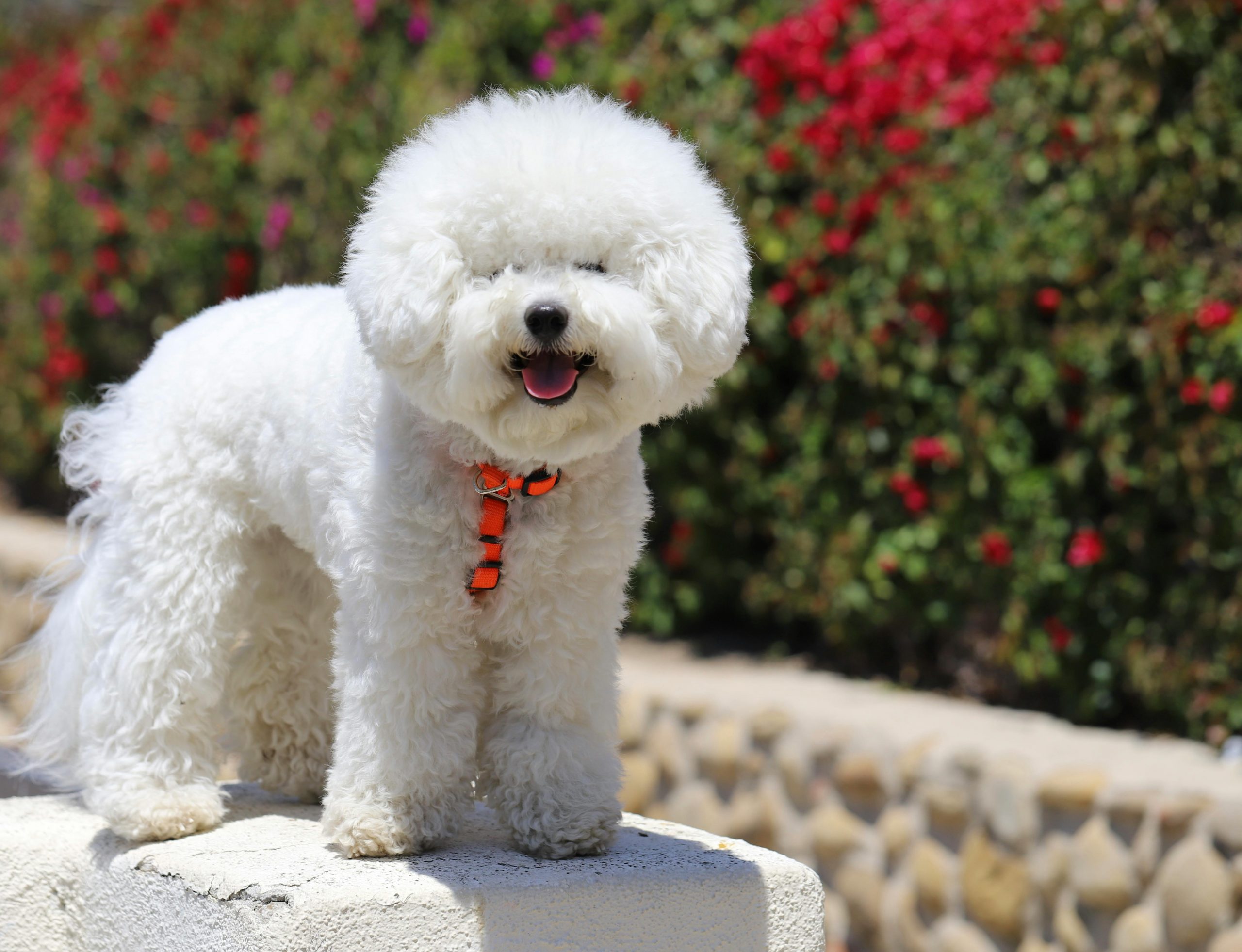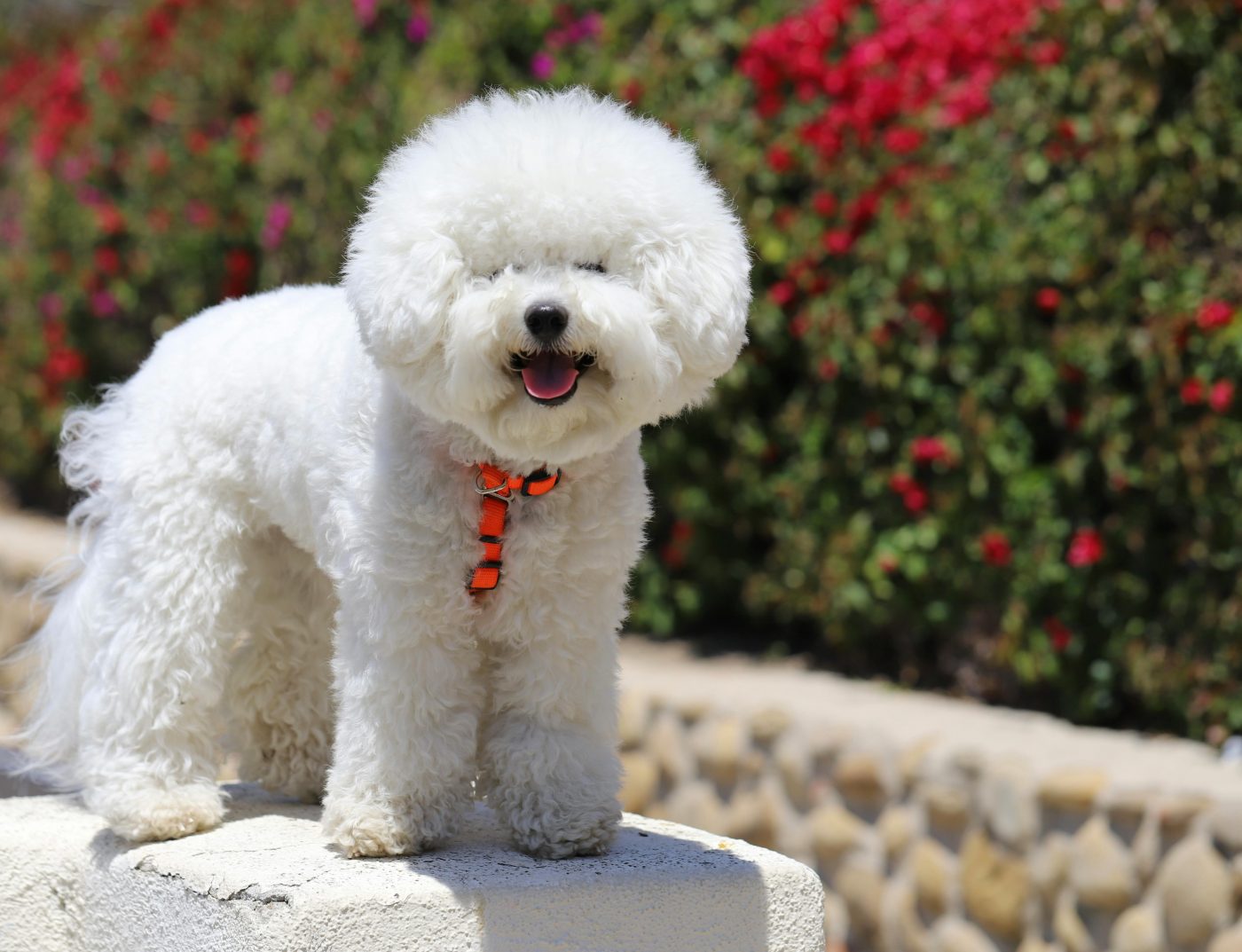
The Bichon Frise, with its cheerful demeanor and characteristic fluffy coat, is a breed renowned not just for its amiable personality but also for its distinctive color variations. While many recognize the Bichon for its predominantly white fur, the breed does exhibit a range of subtle color variations that enhance its charming appearance. These variations, while often understated, can influence the aesthetic appeal of individual dogs and are subject to specific breed standards in competitive shows. This article explores seven stunning color variations of the Bichon Frise, each of which contributes to the breed’s unique visual allure and personality expression.
1. Pure White

The most common and iconic color for the Bichon Frise is pure white. This pristine coloration perfectly complements the breed’s merry and bright personality, making the dogs look like animated cotton balls. A pure white Bichon is highly sought after, especially in show circles where this color enhances the breed’s distinct appearance. The white fur also makes the Bichon’s dark eyes and lips stand out, contributing to their expressive and alert facial features. Owners and groomers must maintain the coat meticulously, as the pure white fur can easily show dirt and staining, which requires regular grooming and bathing to remain spotless and fluffy.
2. White and Cream

White and cream Bichons are slightly less common than their pure white counterparts but are equally adorable. These dogs have a predominantly white base with shadings of cream, particularly around the ears, back, and sometimes on the body. The cream patches are soft and subtle, often becoming more pronounced and darker as the dog ages. This variation adds a warm tone to the Bichon’s appearance, making each one uniquely patterned. The cream color does not affect the texture of their coat, which remains puffy and soft, requiring regular grooming to prevent mats and tangles.
3. White and Apricot

Bichons with white and apricot coloring feature lovely shades of light orange or apricot, usually found on the ears, cheeks, and sometimes the body. Like the cream markings, apricots can deepen with age and under certain lighting conditions. This color variation is highly prized for its rarity and beauty, often catching the eye of judges at dog shows. The contrast between the white and apricot fur highlights the playful and affectionate nature of these dogs, while also demanding the same level of care and grooming as other Bichons to maintain their fluffy appearance.
4. White and Buff

The white and buff Bichon Frises are marked by their light tan or buff-colored shadings, which can appear alongside the white areas of the coat. This coloring is subtle and can range from sandy to a light golden hue. Buff markings typically manifest around the ears, paws, and sometimes across the back of the dog. This understated color variation is perfect for families or individuals who appreciate a Bichon with a slightly different look while retaining the breed’s characteristic fluffy coat and cheerful demeanor.
5. White and Gray

White and gray Bichons are a rare color variation where the gray color may appear as light silvery streaks or patches. This color is usually found on the ears and tail, providing a graceful and distinguished appearance. Maintaining the clarity of the gray against the white fur requires regular grooming, as both colors can fade or yellow without proper care. The gray shading can give the Bichon an almost wise and noble look, adding an extra layer of charm to their already delightful personality.
6. White and Sable

The white and sable variation in Bichon Frises includes patches of dark brown or black, often intermingled with lighter colors, creating a beautiful sable pattern. This color is usually seen around the face and ears, giving the Bichon a strikingly handsome look. The sable markings are dynamic, meaning they can change and evolve as the dog grows and matures, often becoming more pronounced or shifting in pattern. This dynamic aspect makes each white and sable Bichon unique, with a one-of-a-kind pattern that is as individual as their personality.
7. Piebald

Piebald Bichons are those that exhibit large, irregular patches of color, primarily white, mixed with any of the other mentioned colors like cream, apricot, or gray. This variation is quite uncommon and not typically favored by show standards, but it offers a distinctive look for pet owners seeking a unique Bichon. Piebald patterns can make each dog highly individual, reflecting a fun and quirky personality that is inherent to the Bichon Frise breed.
In conclusion, while the Bichon Frise is often celebrated for its dazzling white coat, the breed’s color variations each bring their own special flair to this delightful breed. From the elegance of pure white to the unique beauty of piebald, these colors contribute to the breed’s popularity not just as show dogs but as beloved companions. The care and maintenance of their coat, regardless of color, remain a crucial aspect of owning a Bichon, ensuring that they are not only beautiful but also healthy and happy.
Frequently Asked Questions About Bichon Frise Colors
1. What is the most common color for a Bichon Frise?
The most common color for a Bichon Frise is pure white. This iconic and striking color perfectly complements the cheerful personality of the breed and highlights its fluffy, voluminous coat. Pure white Bichons are particularly favored in show circles, where the bright white enhances their distinct appearance and helps to emphasize their expressive dark eyes and vibrant personalities. Keeping the coat pristine and white requires regular grooming and careful maintenance to avoid staining and yellowing, which can be common with this color.
2. Are Bichon Frises ever completely black or brown?
No, Bichon Frises are never completely black or brown. According to the breed standard set by major kennel clubs, the Bichon Frise should be predominantly white. While some Bichons may display shades of cream, apricot, or buff in their coat, these should only appear as shadings and are usually found around the ears, body, or base of the tail. A completely black or brown coat would be highly unusual and not within the standard for the breed.
3. Can Bichon Frise puppies change color as they mature?
Yes, Bichon Frise puppies can change color as they mature. Puppies born with light cream, apricot, or buff shadings may see these colors either deepen or fade as they grow. The intensity of these colors can also change due to factors like sun exposure, diet, or grooming practices. It’s not uncommon for a Bichon Frise puppy to appear more colored when young, with the coat fading to a lighter shade or becoming more uniformly white as the dog reaches adulthood.
4. What causes the cream or apricot shadings in some Bichons?
The cream or apricot shadings in some Bichon Frises are caused by genetic factors that affect the pigmentation of the coat. These colors are variations of the gene for the white coat and are perfectly normal, although they are less desired in the show ring than a pure white coat. These shadings usually appear in areas such as the ears, back, and sometimes the flanks, giving the Bichon a soft, warm hue that contrasts with the pure white areas of their fur.
5. Is it common for Bichon Frises to have markings?
Yes, it is quite common for Bichon Frises to have subtle markings of cream, apricot, or buff, especially as puppies. These markings often become less noticeable as the dog matures, with the coat frequently turning completely white or retaining only faint hints of these colors. Markings are more accepted in pet Bichons than in show dogs, where a completely white coat is often preferred for competitive purposes.
6. How can I maintain the white color of my Bichon Frise’s coat?
Maintaining the white color of a Bichon Frise’s coat requires regular grooming and careful attention to cleanliness. Bathing your Bichon every 4 to 6 weeks with a high-quality dog shampoo can help prevent yellowing and staining. Daily brushing is also essential to remove dirt and prevent matting, which can discolor the coat. Additionally, using tear stain removers can help manage discoloration around the eyes, and protective wipes or sprays can be used on the paws and muzzle to combat staining from food or grass.
7. What is the rarest color found in Bichon Frises?
The rarest color variations in Bichon Frises would be those with pronounced apricot, buff, or gray markings that persist into adulthood. These colors are rare because they tend to fade as the puppy grows older, typically leaving a predominantly white coat. Persistent and distinct color markings in adult Bichon Frises are unusual and not typically seen in the breed standard for show dogs.
8. Are Bichon Frises with color markings less healthy?
No, Bichon Frises with color markings are not less healthy than those without markings. The presence of color markings is purely a cosmetic attribute and has no known correlation with the health of the dog. All Bichon Frises, regardless of coat color, are prone to the same health issues typical of the breed, such as allergies, dental problems, and joint issues.
9. Do Bichon Frises ever have a piebald pattern?
A piebald pattern, characterized by large irregular patches of color, is extremely rare and not standard in Bichon Frises. While some Bichon mixes might display this type of coloring due to genetics from other breeds, purebred Bichon Frises do not typically exhibit piebald patterns. The breed standard calls for a coat that is predominantly white, possibly with shadings of cream or apricot but not in distinct patches or spots.
10. Can environmental factors affect the color of a Bichon Frise’s coat?
Yes, environmental factors can affect the color of a Bichon Frise’s coat. Sun exposure can cause the coat to lighten, and certain elements in the soil or grass can stain or tint the fur, especially in lighter-colored areas. Diet and health also play a role in coat condition and color; for instance, nutritional deficiencies can dull the coat, while certain foods or supplements might enhance coat health and vibrancy. Regular grooming and proper care are essential to manage these environmental effects and maintain the coat’s color and texture.
Discover more from reviewer4you.com
Subscribe to get the latest posts to your email.





